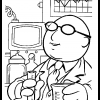Hello everyone,
We are working new supplier of hand wash soap (Anti-microbial hand wash soap). We need to set target of soap quality. As per FDA guidelines will helps or other.
The sample tested physically, it looks fine. Lab tested i.e pH, 7.65, Moisture% 72, and test organisms
- Bacterial culture count E. Coli (before contact) log10/mL 8.0
- Bacterial culture count E. Coli (after contact) log10/mL 3.0
- Reduction log 5.0
Looking for specification with reference to evaluate the quality of soap,,
Regards,
Ashfaq Hussain




















